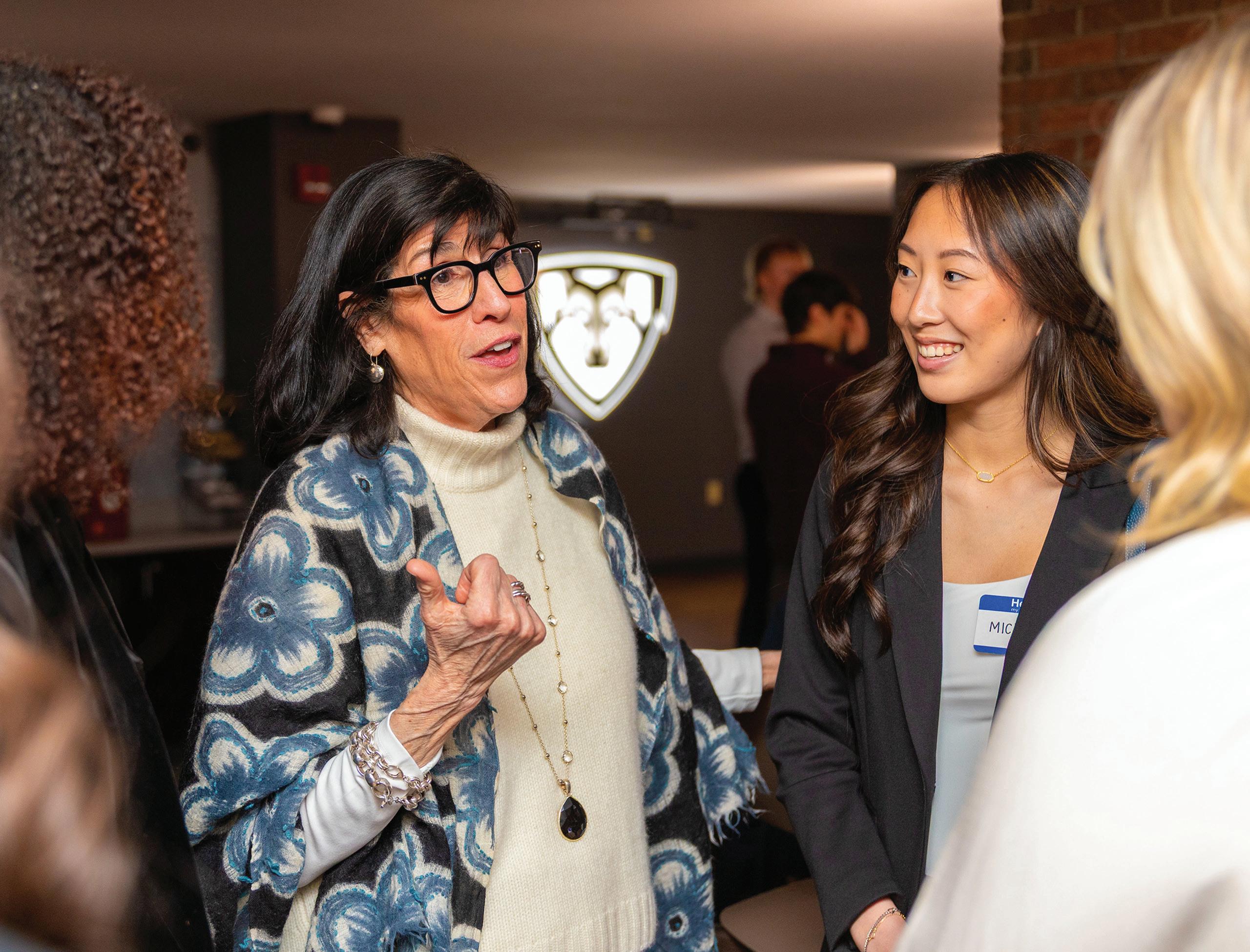

We’re Here For You
Dear Bonnie,
At the CPRC, we believe in the words taught to us by our patron Saint Bonaventure, that “there is no knowledge without love.” Our goal is to educate the whole of our students and prepare them for the challenges they will face, not only in their personal lives, but in their professional careers. The Career and Professional Readiness Center is a lifelong service that starts as soon as you move in for Welcome Days and stays with you as a resource beyond Commencement.
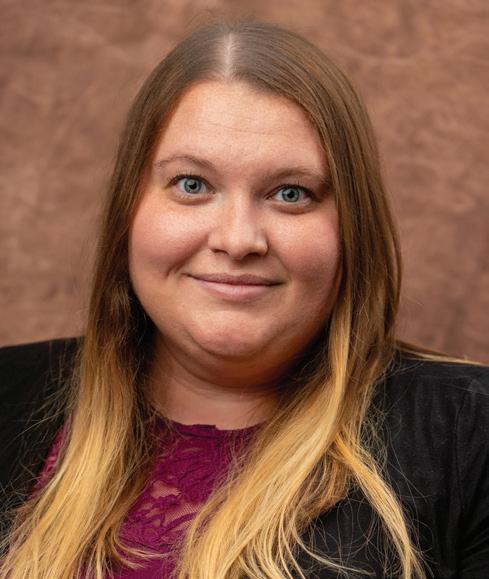
The CPRC is dedicated to assisting you in preparing for life after graduation while you are still on campus. We are a primary interface between employers, alumni and students by equipping you with the tools and guidance necessary for success.
The CPRC is more than just a resource for finding and applying for jobs. We are here to help you develop essential skills, enhance your professionalism, and prepare you for the future. The CPRC also hosts networking events like Bonnies4Bonnies, connecting you with alumni and professionals in your field to allow you to build relationships that can lead to internships and future job opportunities.
We have many exciting initiatives coming in Fall 2025, including SBU 105: Professional EDGE, a three-credit course that helps you perfect your resume and fine-tune your interview skills. This course is taught by the CPRC, which is affiliated with the National Association of Colleges and Employers (NACE). Our goal is to promote career readiness while following new trends and insights.
Data shows that college students who visit their college career center are 67% more likely to land a full-time job compared to their peers who did not use career center services. Katie O’Brien, vice president of Student Affairs at St. Bonaventure, says, “If you are looking to make the most of your time at St. Bonaventure, to grow as a leader and gain experiences that prepare you for your future, then you need to make the CPRC part of your experience from year one.”
Please reach out to us directly. We look forward to assisting you on your journey!
Molly Moretti Director of the Career and Professional Readiness Center
Meet the CPRC Staff
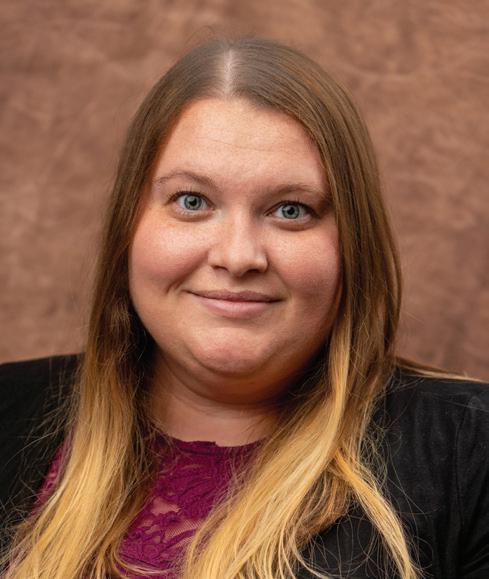
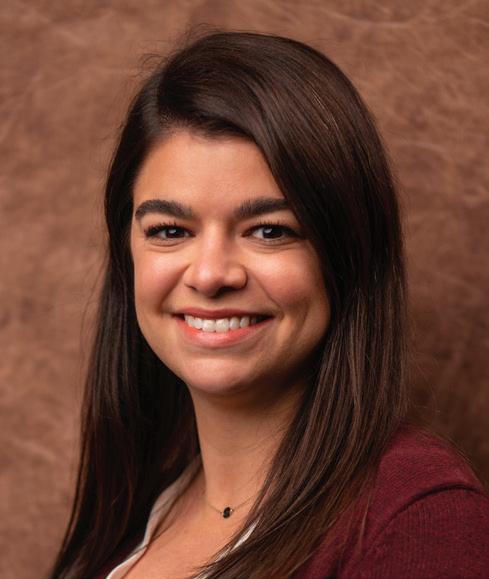
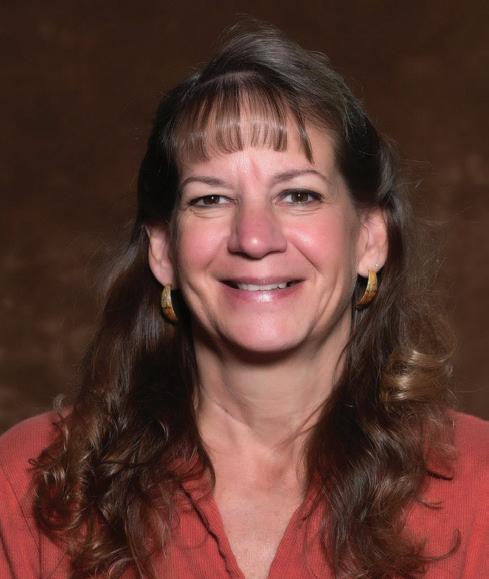
Molly Moretti joined the CPRC in 2021 as a Career Counselor and became the Director in 2023. Molly has her master’s degree in Higher Education Administration and over eight years of direct experience working with students. As the director, Molly oversees the CPRC and is the adviser for the Leadership Program. She also focuses on helping guide undecided students through the process of declaring a major. Molly has a passion for traveling and loves spending time with her family.
Ashley Scholla joined the CPRC in 2021 with more than 10 years of corporate business experience. As the assistant director of the CPRC, Ashley supports students during one-onone appointments to help develop resumes, search for jobs/ internships, prep for interviews, and overall professional development. Ashley loves spending time with her family, playing golf and watching football. She is also the senior class adviser.
Lisa Clark joined the CPRC team in 2014 with more than 20 years of previous work experience in nonprofits and education. As CPRC’s operations coordinator, Lisa coordinates the daily operation of the CPRC, helping staff and students navigate busy schedules. Lisa loves boating on the Kinzua Reservoir, walking the Allegheny River Valley Trail, playing euchre and pinochle and spending time with family and friends.
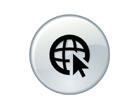
The Leadership Program
The Career & Professional Readiness Center has revamped our Leadership Program for the 2025-2026 academic year. In our new and improved program, students will:
• Learn from other students, staff/faculty, and leaders on campus
• Network with SBU alumni
• Gain experience to build resumes
• Attend leadership trips
• Volunteer and complete community service hours
• Meet lifelong friends
• And much more!
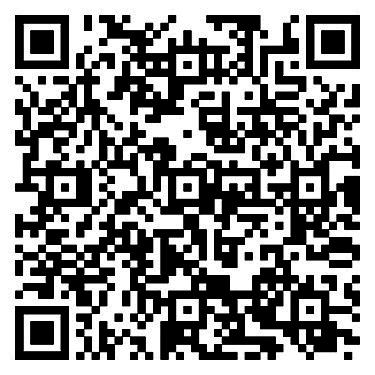
Scan to complete a Leadership Program interest form so we can invite you to the ’25-’26 interest meeting
Lauren Loiacono was vice president of the Freshmen Leadership Program for the 2024-2025 academic year. Lauren is continuing as a mentor for the Leadership Program for the 2025-2026 academic year.
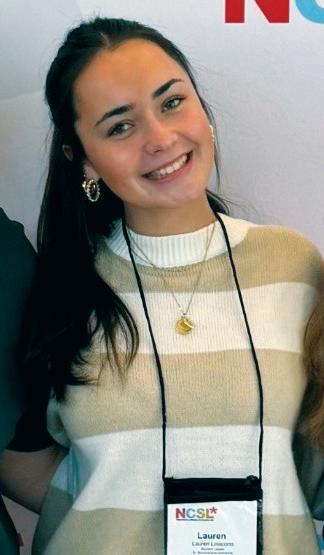
“What I learned most about being a part of FLP is putting yourself out there and making connections — making connections not only for your career and academics, but also personal. I have created strong friendships and connections that I did not expect to make, and I am beyond happy that FLP was the reason. I have also learned that taking the first step can be scary and overwhelming, but in the end, it is worth it. You don’t know what will happen next, but putting yourself out there and trying new things can be so valuable and rewarding. There are so many lessons and opportunities that can occur throughout.”
”
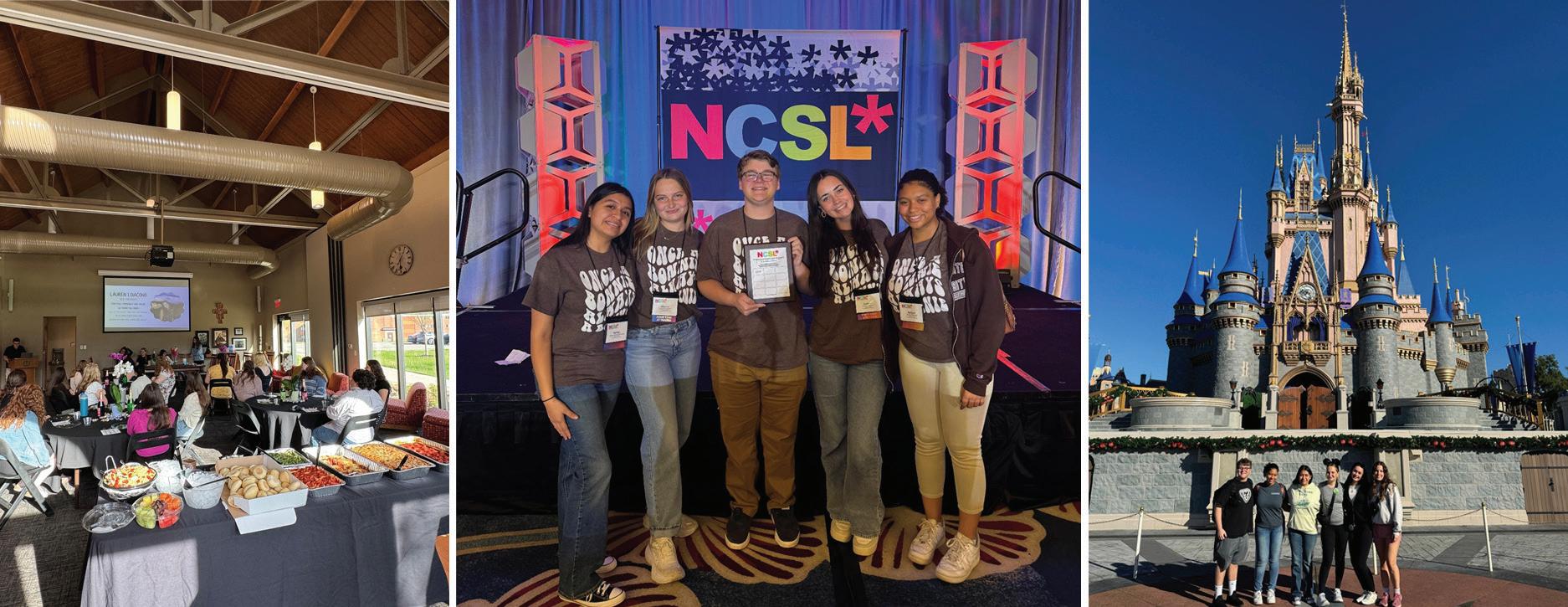
YEAR 1:EXPLORATION
Get Ready
• Settle into campus and academic life.
• Develop relationships and start networking.
• Meet with your academic adviser and/or the CPRC.
• Explore different majors that interested you.
• Think about your plan (grad school, service, research).
• Get involved on campus by joining an organization or two.
• Login and explore Handshake (sbu.joinhandshake.com).
• Create/update your resume and have the CPRC review it.
• Join The Leadership Program.
YEAR 2: INVOLVEMENT
YEAR 3: EXPERIENCE
• Continue networking with students, faculty, and alumni.
• Attend employer information sessions and networking events.
• Start your internship search.
• Connect with the CPRC to discuss career options, internships, majors, summer jobs, and more.
• Create a LinkedIn profile and start growing your professional network.
• Consider running for a leadership position in your organization/club.
YEAR 4: TRANSITION
• Update your resume, cover letter, and LinkedIn page.
• Apply for internships.
• Understand graduate school admission requirements.
• Take the SBU 105: Professional EDGE course for professional development growth.
• Follow up with contacts you’ve made networking.
• Consider sanitizing your social media accounts for the viewing of potential employers.
• Book the Digital Engagement Room for virtual interviews or professional head shots.
• Enjoy your last few months of college.
• Do a “senior audit” with your academic adviser.
• Make an appointment with the CPRC to start your job search.
• Continue building your professional network.
• Update your resume, cover letter, LinkedIn profile, etc.
• Maintain a good relationship with past employers and faculty members.
How to select
Your Major
Complete a self-assessment to discover majors and occupations that match your work interests, values, skills and personality:
Focus 2 Career
Log into Focus2Career.com Register using St. Bonaventure’s access code: bonnies
Research possible careers: Write down careers you find interesting then search for job openings all over the U.S. with those job titles and look at their requirements. You can use job search engines such as Indeed, LinkedIn and Monster.
Shadow: Job shadowing is when a student follows and observes a professional for a short time, such as a day or a week. After you’ve shadowed, you should have a better idea of what professionals do each day and whether you can see yourself following that career path.
Give yourself time to decide and match your career interest to a college major: You have your freshman and sophomore years to decide what your major will be. Take this time to explore introduction classes you are interested in.
WhatCanIDoWithThisMajor.com is a resource that provides general information and job title examples for each major at St. Bonaventure University.
Understand other opportunities once you’ve selected a major:
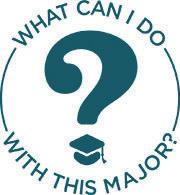
• Declare a Minor – Each minor is composed of a minimum of 18 credit hours to offer students an opportunity to study a specific area outside of their major.
• Be a Double Major – A student may elect to add a second major to their primary degree program. Only major requirements (and their prerequisites) of the second major are required. Only one degree will be conferred.
• Individualized Majors – Undergraduate students with clearly defined academic or career objectives have the opportunity to create a tailored degree program for a major not available from the majors listed elsewhere in the catalog.
Handshake
Use Handshake to make an appointment with a member of the CPRC for one-on-one support in all things career related, such as resume and cover letter development, networking, interviewing practice and guidance, and much more. Handshake is the No. 1 career network and recruiting platform for college students, career centers, employers and young alumni. Together, we can help you land that internship or job!
How to Use Handshake
Logging in: Access your account through https://sbu.joinhandshake.com/login. Use your my.sbu. edu username/password.
Complete profile & upload resume: Update your education, add work experiences, volunteer experiences, organizations, extracurricular activities, relevant courses, related projects and skills. Upload your resume to the document section (you’ll need this uploaded to apply for jobs and internships).
Apply for jobs/internships: Handshake is full of on-campus jobs, internships, part-time, full-time and volunteer opportunities. These opportunities are updated on Handshake daily.
Make an appointment: To make an appointment with a member of the CPRC, select “Career Center,” click on “Appointments” and select “Schedule A New Appointment.” Choose an appointment type and select a time/date.
Attend events: The CPRC and employers will host information sessions and workshops (virtual & in-person) throughout the academic year. Check out and register for upcoming events by clicking on the “Events” tab.
More than 250,000 employers post opportunities to Handshake – be sure to utilize Handshake for internship and job searches.
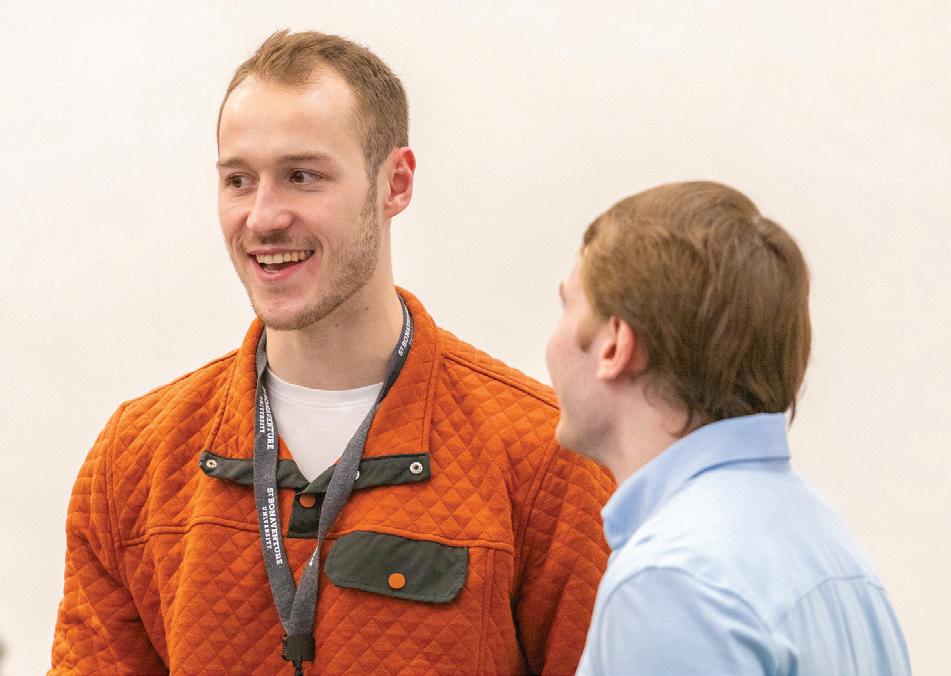
On-Campus Student Employment Opportunities
Are you interested in working on campus? Positions are posted throughout the year whenever a department has a need for a student employee. Much of the on-campus hiring happens at the beginning of each semester. Log into your Handshake account to apply for on-campus employment.
How to create a
Winning Resume
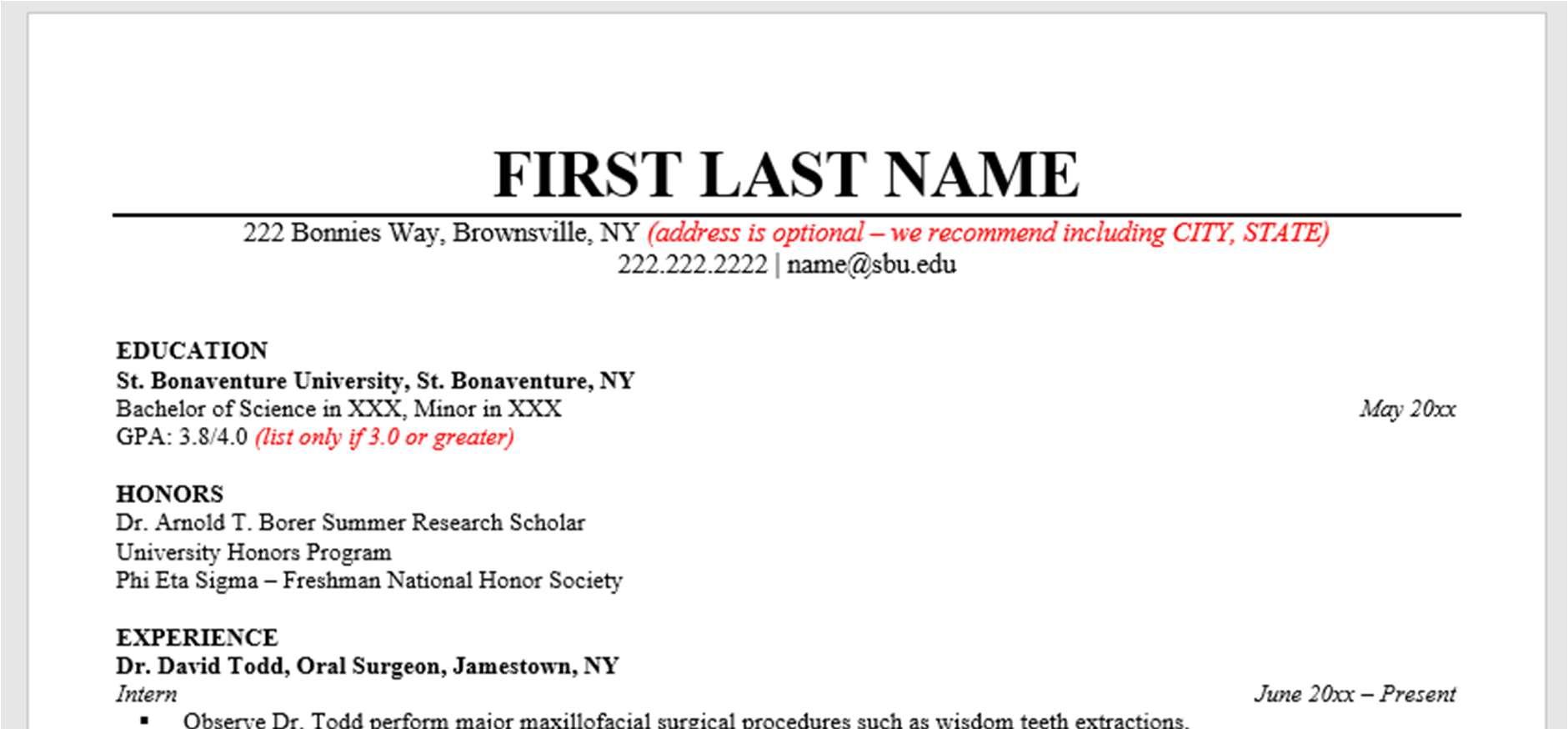


A resume is a brief summary of your qualifications, education and experiences relevant to your job search objective. The purpose of your resume is to obtain an interview. Research shows that employers spend fewer than 30 seconds reviewing a resume, so the information must be conveyed in a clear, wellorganized style.
Check out the Resume Writing Tutorial by using the QR Code.
General resume tips:
Stick to traditional fonts such as Arial, Times New Roman, Calibri, Georgia or Tahoma.
Use point sizes 10-12.
Use “normal” (1 inch) margins or “narrow” (0.5 inch) margins.
Avoid resume templates and avoid using headers/footers.
Keep your resume to one page.
Make an appointment with the CPRC for resume creation/review.
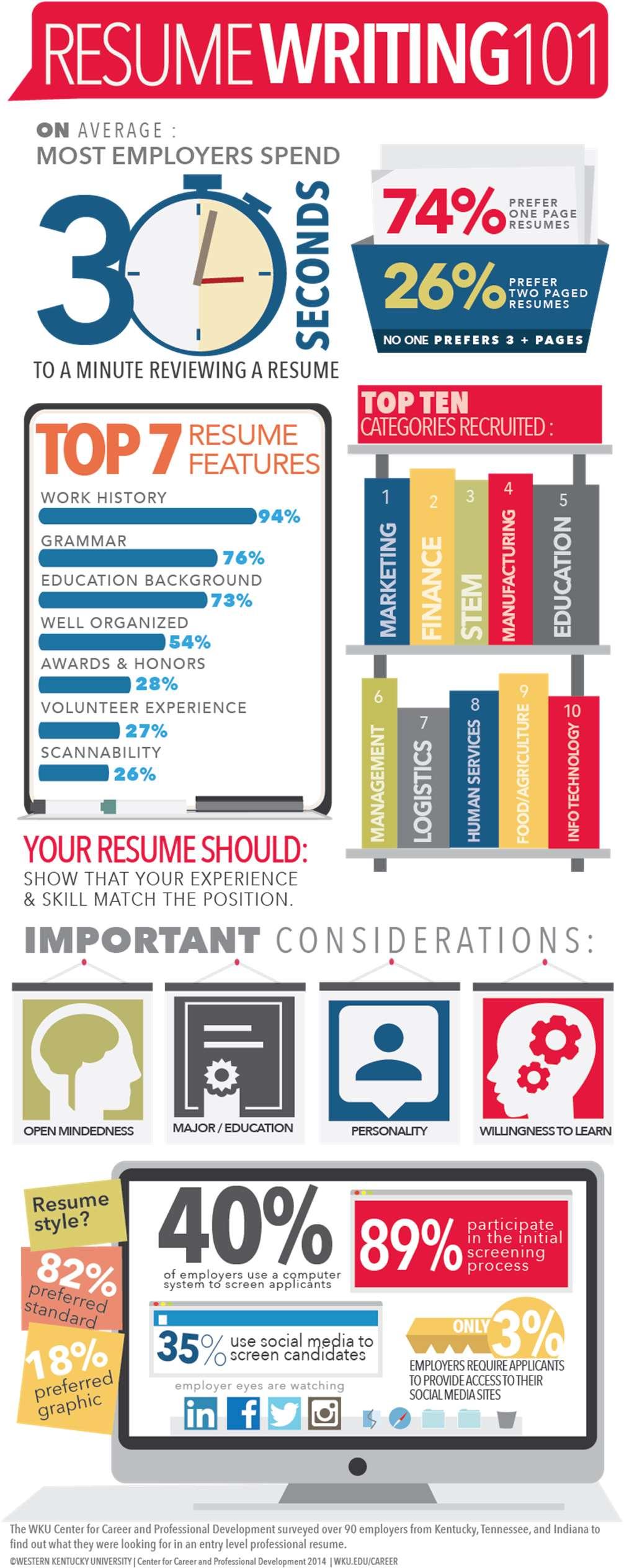
76% of resume rejections are due to an unprofessional email address while 43% of resumes are discarded for not being wellwritten.
The CPRC can assist you with resume and cover letter creation, interviewing skills, job/ internship searches and so much more! And our services are FREE!
Here are more examples of resumes:
<img src="https://www.nicepng.com/png/detail/530-5302180_resume-writing-infographic-resume-for-writers.png"
The Write Stuff
Cover Letters, References and Thank-You Notes
The purpose of your cover letter is to introduce yourself and expand upon the experience in your resume.
Crafting Your Cover Letter
1. Clearly state the purpose of your letter.
2. Include specific information about why you want to work for the employer.
3. Demonstrate knowledge of the position.
4. Align your experience with the desired qualifications of the position.
Cover letter DOs and DON’Ts:
• DO write a targeted cover letter for each position you are applying for.
• DON’T send the same cover letter to multiple employers.
• DO run spellcheck, proofread and have someone review your cover letter.
• DON’T write more than one page.
• DO use the same header on your cover letter as your resume.
Submitting Professional References
You will not need to submit professional references with your resume unless asked, however, it’s best to have 3-5 professional references in mind. If submitting a document with references listed, be sure to use the same header as your resume and cover letter.
We recommend 3-5 professional references. References should include people who have supervised you in an academic setting or during a job, internship or volunteer position.
Always secure permission from a reference in advance. Send your reference a copy of your resume and job description and give your references a heads up when you expect they will be contacted. Don’t forget to thank your references for their help.
Thank-You Notes
To continue to impress a future employer, it’s important to write a thank-you note (or email) after your interview. According to Robert Half, only about 24 percent of candidates actually send a post-interview thank-you note. However, some employers won’t schedule a second interview until they receive a thank-you note (or email).
Let’s review some thank-you note pointers:
1. Send your thank-you note(s) immediately after the interview (same day).
2. Don’t send a generic thank-you note – make it personal and thoughtful:
Your Name Your Contact Information
a. Start with a greeting about how much you appreciated the meeting
b. Mention something specific about the interview or something you discussed
c. Explain why you see this as an exciting opportunity
d. Give a brief description on why you are a good fit for the job
e. Conclude with next steps and your contact information
SmithXYZAvenue,Suite1 NY11111 Ms.Smith wouldliketothankyouforyourtimetoday.IappreciateyourinterestinmycandidacyfortheAssociateDirectorposition hopethatourconversationduringtheinterviewhelpedyouunderstandtheskillsetanddedicationIwouldbringexcitingpositionofferedatCompanyXYZ. foundthequestionsyouaskedduringmyinterviewtobeveryengaginganditwasexcitingtohearaboutthedevelopments withinCompanyXYZ.Iwouldbehonoredtoworkwithyoutodevelopacohesivemarketingplanfortheexisting Theinterviewprocessallowedmethechancetofeelcomfortablesayingthatthecommunicationskillsyouareseeking inyourmarketingteamreflectsmytalentsandexperience.Ibelievemyexperiencewithbrandmanagement,special presentations,speechwritingandcoachingcouldcontributetotheoverallsuccessofthecompany’smarketing Afterspeakingwithyou,IbelieveIcouldoffermystrengthsinthefollowingareas: Distinguishedstrategicplanningskills–acquiredthroughcreatingspecialevents,advertisingcampaigns scalemarketing/brandingprograms.havevastexperiencedevelopingandwritingstoriesandspeeches missionoftheCompanyXYZ.requiredskillsinworkingwithteam
For more examples or to schedule an appointment with a career counselor, scan the QR code!
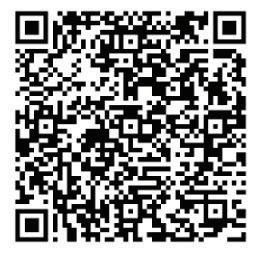
Preparing for Graduate School
If you think graduate school might be an option for you, begin discussing it with your academic adviser, faculty members, the CPRC office and/or the graduate admissions office, early and often. Consider various schools and graduate programs, coursework you may need to complete as an undergraduate and the level of scholastic achievement required.
If you are interested in St. Bonaventure’s graduate programs, you can take up to three graduate classes during your senior year, at no extra cost. This could save you up to 30% on your graduate degree if you plan properly. You may also be able to complete your undergraduate and graduate degree in five years, depending upon the program.
Sophomore Year
• Research schools and programs of interest online, speak to faculty, and connect with students and alumni of prospective programs.
• Look for summer jobs/internships in your field to strengthen your candidacy.
Junior Year
• Meet with your academic adviser to discuss graduate school and to make sure that you are on track to fulfill requirements for graduation.
• Talk to seniors in your major who are going through the graduate school application process.
• Start researching financial aid options, scholarship deadlines, etc.
• Begin preparing for entrance exams (GRE, LSAT, GMAT, MCAT, etc.).
Online resources to support your search
• www.sbu.edu/gograduate
• www.petersons.com/graduate-schools.aspx
• graduateguide.com
• www.gradschools.com
• www.princetonreview.com/grad-school-search
Senior Year
• Put together a list of individuals you will ask to write letters of recommendation on your behalf and create your personal statement (and other essays) required for applications.
• Contact financial aid offices and request general information and application deadline information. Financial aid deadlines can be different from application deadlines – most deadlines range from mid-November through early February.
• Take entrance exams and prepare for interviews (if applicable).
• Be prepared to decide on a program by April – and develop contingency plans in the event you don’t get accepted to the school(s) of your choice.
• Send thank-you notes to reference writers, interviewers, etc.
• Let your reference writers, professors and everyone who assisted you know where you have been accepted and where you have decided to go.
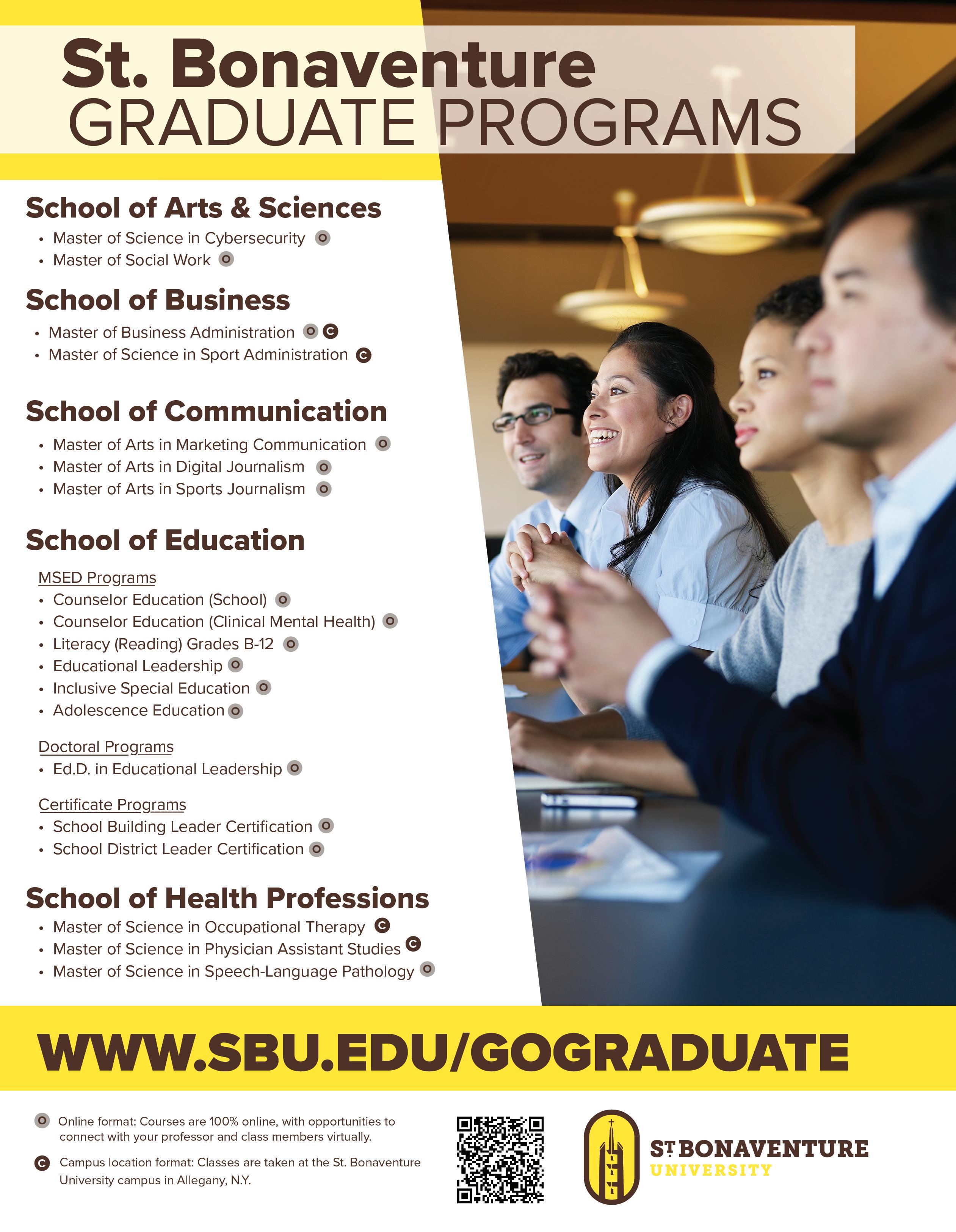
What should I bring to the interview?
Interview location/directions: Make sure you know where the interview is taking place. If needed, drive there a day or two before so you don’t have to figure out where to go the day of.
Contact name/number: Have a point of contact for your interview so if something comes up you know who to get a hold of.
Proper identification: Some office buildings require identification for entrance or will give you a visitor pass. Ask the interview scheduler in advance if any specific identification is needed/required.
Notepad and pen: Bring an appropriate notepad and pen to take notes during your interview.
Extra copies of your resume: Sometimes an interviewer will show up without a copy of your resume. Print a few extra and hand out, as needed.
Reference list: Have a few printouts ready, just in case.
Smartphone: Just be sure you put it on silent mode before your interview!
First impressions are made within the first 7 seconds of meeting someone.
Millennials and GenZ will make up about 75% of the global workforce by 2025.
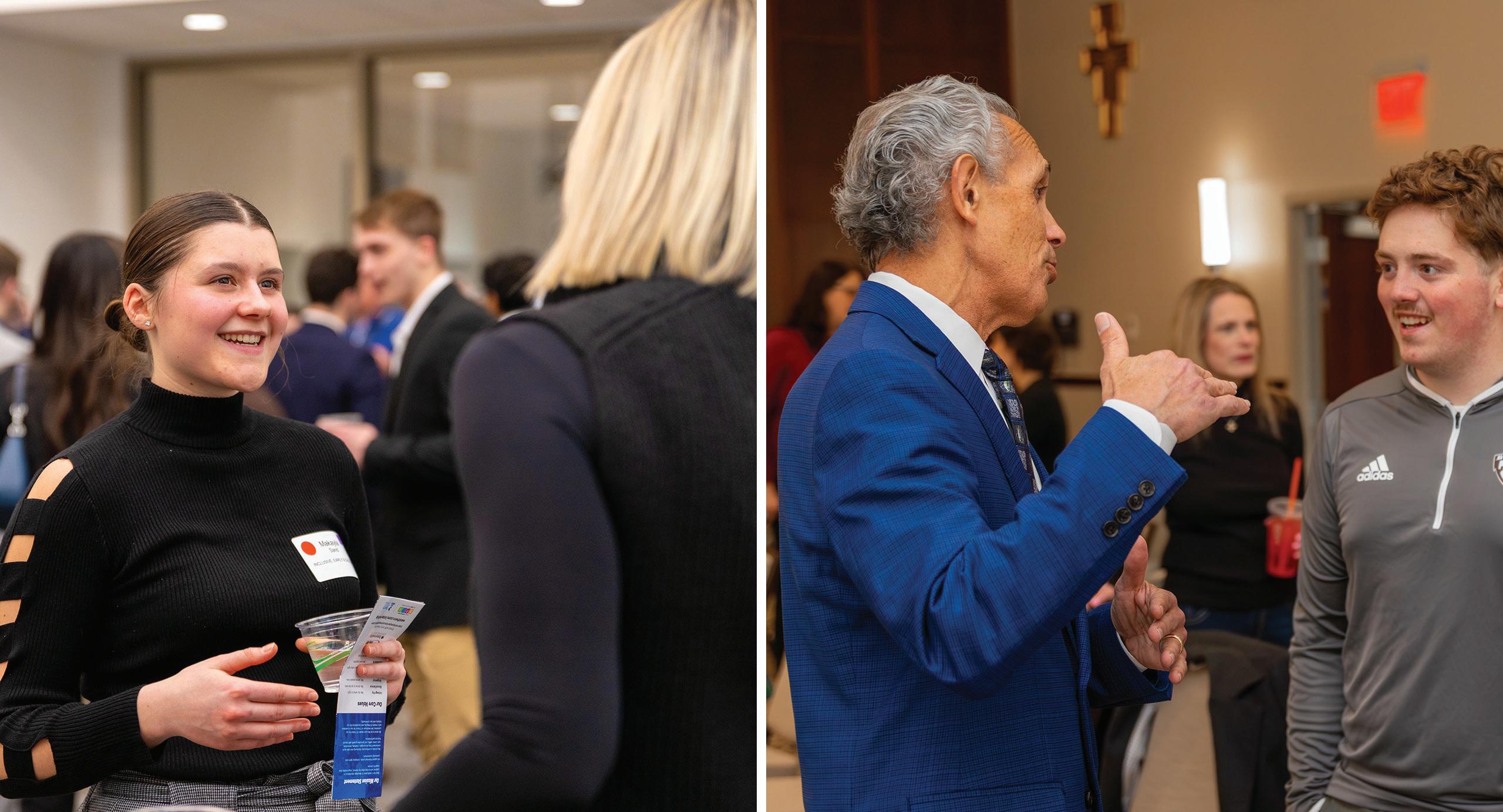
What should I wear to the interview?
Follow these tips on how to dress for success and decode the business professional dress code!
1. When in doubt, dress conservatively.
2. A suit will suffice in most situations.
3. Make sure your outfit is wrinkle free.
4. Stick with solid colors & tighter woven fabrics.
5. Accessories should be kept simple.
6. Toes should be covered & shoes should be polished.
Creating a professional look can help you command attention and serious consideration at work.
7. Be sure your hair is neatly done & trimmed. Avoid the messy look.
8. Shirts with lettering or graphics should not be worn.
9. Check your outfit for missing buttons, lint or a crooked tie.
10. Skirts should be just above the knee or no shorter than the tips of your middle finger.
Presenting a positive representation of yourself is a key component of experiencing professional success.
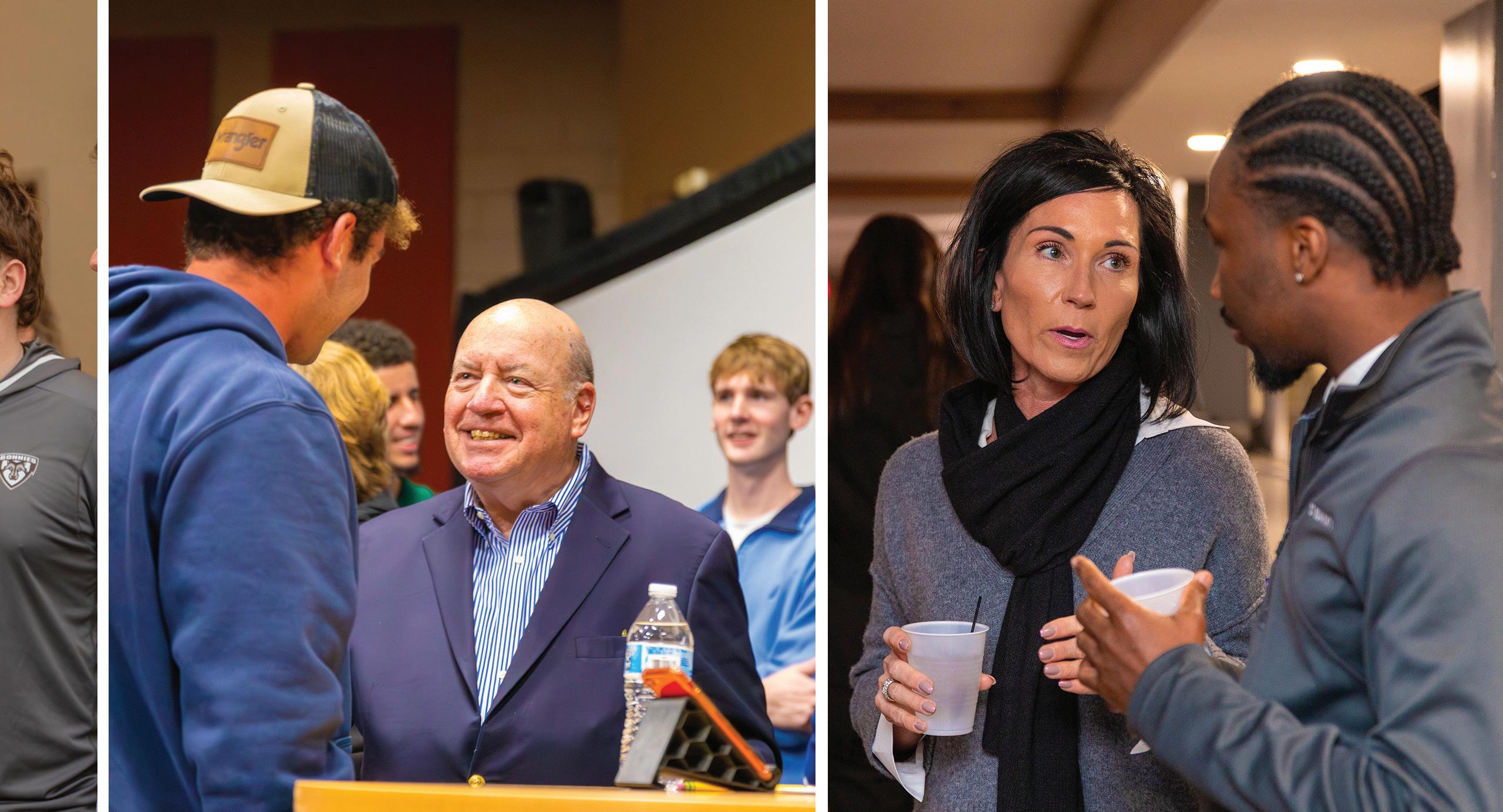
Top Reasons to Create Your LinkedIn Profile
What Is LinkedIn?
LinkedIn is a website that provides professional networking opportunities, chances to connect with other individuals, companies and job opportunities.
A Way To Connect With Others:
Want to stay connected with co-workers, peers, mentors and alumni? LinkedIn allows you to make connections with others that may share similar interests or passions.
Ways To Find Job Opportunities:
LinkedIn is utilized by recruiters and employers to find profiles of potential candidates for their job opportunities. Job postings can also be found through LinkedIn.
Networking Opportunities With Top Professionals:
Looking to connect with other professionals in your industry? Connecting with professionals in companies within the industry you’re interested in could help find opportunities for career options.
Keep Up To Date On Information:
LinkedIn provides the latest news and information about your industry, which can help to expand your knowledge.
Showcase Your Skills:
Your profile is an opportunity to showcase work experiences and skills to recruiters, which can open up job opportunities.
LinkedIn Learning:
LinkedIn Learning is free to all students! (new for 2025)
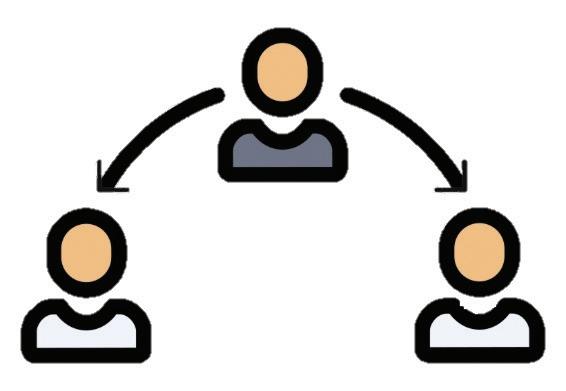
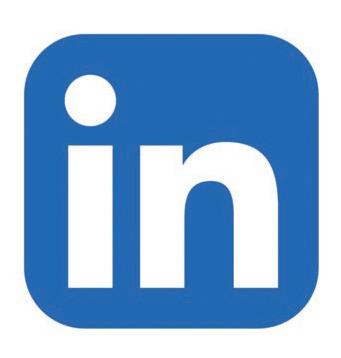
On-Campus Career Closet
The Career & Professional Readiness Center (CPRC) is opening a Career Closet!
Students will be able to “shop” — for free — for business casual and professional items. Students can schedule an appointment with the CPRC to select items to create two outfits per semester for interviewing, networking, student teaching, observation, and more!
According to a 2022 Forbes article, “Dressing like a professional can help you make major strides toward landing partnerships that matter, getting new jobs, or unlocking new opportunities. ... Dressing to look the best in your professional field can go a long way toward opening new doors for you.”
The Career Closet is free to all students at St. Bonaventure. Please consider donating from your own professional wardrobe by reaching out to career@sbu.edu for an inquiry form.


Keep it Professional Using LinkedIn and Email
Upload an appropriate profile picture – this doesn’t have to be formal, but make sure it’s appropriate. If you don’t have a professional head shot then have a friend take a picture of you with your phone with a clean background. If you want to connect with someone you’ve never met before, be sure to send a brief message along with your connection request (300 characters max).
Sample message:
Hello, my name is NAME and I’m a senior marketing major at St. Bonaventure and wanted to connect with you to learn more about your career path. I was hoping we could connect.
Be mindful of your posts. Avoid topics that you wouldn’t discuss during an interview, such as politics, religion and family news. LinkedIn is a different social media platform than Facebook, Twitter and Instagram.
Your profile should be a replica and extension of your resume. As you update your resume, update your LinkedIn profile with your most current job, experiences, certifications and skills.
Nothing is confidential, so write your emails accordingly. Assume that others will see what you write; therefore, don’t write anything you wouldn’t want everyone to see.
If you have an emotional or frustrating reply, draft your email then take a walk or a break. When you come back to your computer, re-read your email and see if you are still comfortable sending it. You’ll likely make some edits.

Use an appropriate (formal) salutation in all emails and replies until you are certain it is OK to do otherwise.
Avoid “reply all” when you can. No one wants to read emails from 20 people that have nothing to do with them.
Proofread and run spellcheck! We are all human and make mistakes, but make it a habit to take a few extra minutes to re-read your email and check your spelling before clicking “send.”
Interview Prep
Preparing for an interview is taking time to thoughtfully consider your goals, qualifications and skills relative to the job you’re interviewing for. Performing adequate research and carefully reviewing the job description will help you understand why you would be a good fit.
Let’s dive deeper into the interview preparation process.
• Examine the job description: Use the job description as your guide. The job description will list qualifications, qualities and background the employer is looking for in a candidate. Try to align your goals, qualifications and skills to the details in the job description. The job description will also give you ideas about questions the employer may ask you during the interview and can help you come up with questions of your own to ask the employer.
• Understand why you are interviewing: You should have a good understanding of why you want the job and why you’re qualified. Be prepared to explain your interest in the opportunity and what makes you the best candidate for the role.
• Research the company and culture: Check out the company’s social media account or blogs that discuss its culture. It’s important that you fit within the company culture and share similar values. You can also ask questions during the interview about the workplace environment, culture, values, etc.
• Research the company product/service: Get an understanding of the products/services the company produces or promotes. You don’t need to know every detail about the product/ service, but it’s important to have a basic understanding going into the interview.
• Practice common interview questions: There is no way to predict the interview questions you’ll be asked during the interview but there are some common interview questions that you can plan answers for in advance. For example: Why do you want to work here? What interests you about this role? What are your greatest strengths? What is your greatest weakness? Tell us about yourself. Prepare for these common interview questions in advance.
• Do mock interviews: At SBU, you have access to a program called BIG Interview, which will help give you the confidence to feel ready for your next interview experience. Go to SBU. biginterview.com and practice, practice, practice!
• Prepare questions for the interviewers: Interviewers like when candidates ask thoughtful questions about the company or job. For example: What does a typical day look like in this role? What qualities do you see in successful employees? Why do you enjoy working here? What are the next steps in the hiring process?
Virtual Interviewing Tips & Tricks
Test your technology: Be sure you are set up for success well in advance! Check your internet connectivity and confirm that your camera and microphone are working properly. Do this several days in advance in case you need to borrow equipment or download new software.
Show up on time: This is the easiest way to start things off on the right foot. While you do not need to log on 15 minutes earlier, like an in-person interview, you do want to enter the virtual interview ahead of the set start time.
Dress for success, even remotely: Be sure that you look polished and professional – at least from the waist up. Consider a button-up shirt/ blouse and be sure to groom as you would for an in-person interview.
Think about your background: Consider booking the Digital Engagement Room on campus! If not, find a clean and quiet area of your living space. Speak to roommates in advance to ensure that nobody will walk behind you or make loud noises during your interview experience.
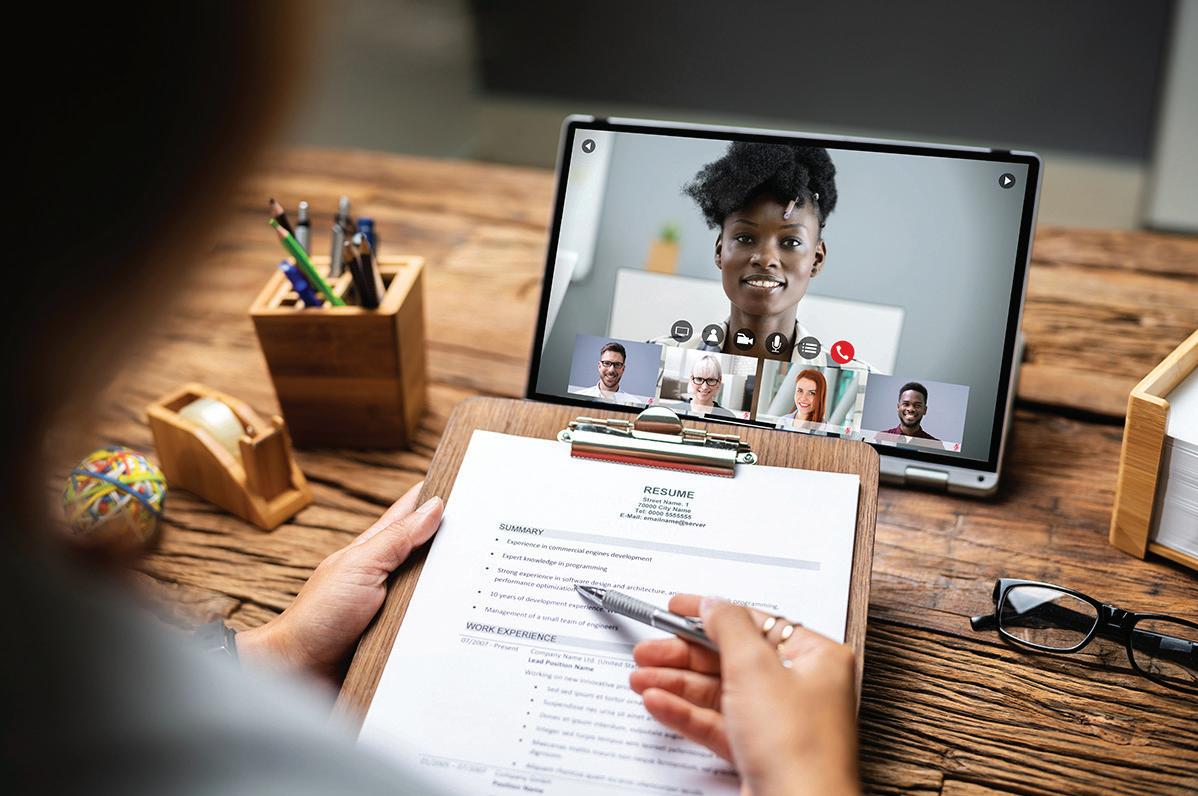
Make “eye contact” with the camera: This gives the appearance of making eye contact and not being distracted staring at your screen. If it helps, consider putting something next to your webcam to remind you to look directly at it throughout the call. Making eye contact, even through a webcam, helps foster a sense of genuine connection and attentiveness and can make all the difference when trying to hit it off with your interviewer.
Stay focused and visibly engaged: Active listening will show your interviewer that you’re motivated and engaged. Consider nodding your head to give affirmations of understanding while they talk and ask clarifying questions when necessary. Keep a notebook next to you to jot down notes and takeaways during the interview – avoid typing notes on your computer as it can be loud and distracting.
Don’t rely on a “cheat sheet” but be prepared: Come to the interview prepared with a few questions that you’d like to ask the interviewer. This shows initiative and genuine interest. If relevant, be prepared to share your portfolio or examples or your work.
Etiquette Dinner
Etiquette dinners are held at least once a semester for our students. Attending an etiquette dinner is a great way for students to brush up on their table manners and learn how to conduct themselves in a formal dining situation (i.e., business dinner, interview). First impressions are very important and we want our students to be prepared for any dining occasion.
Etiquette Dinner
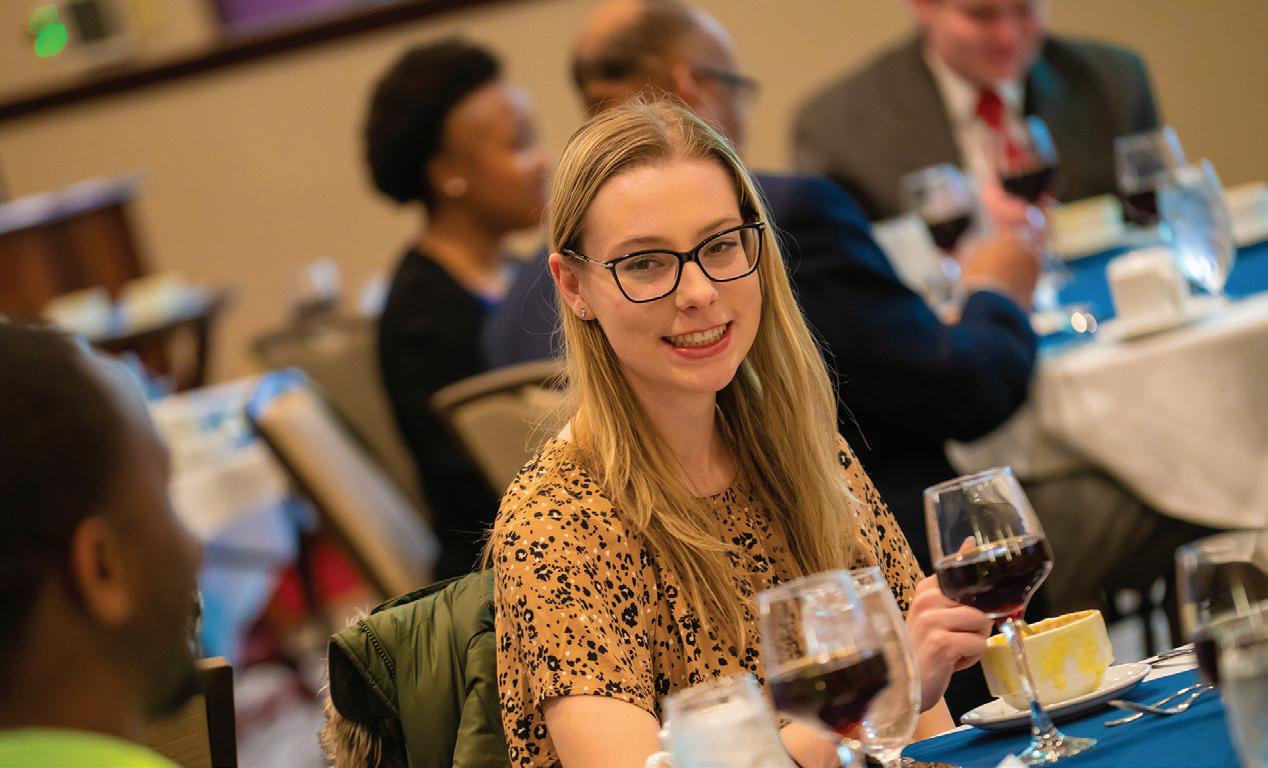
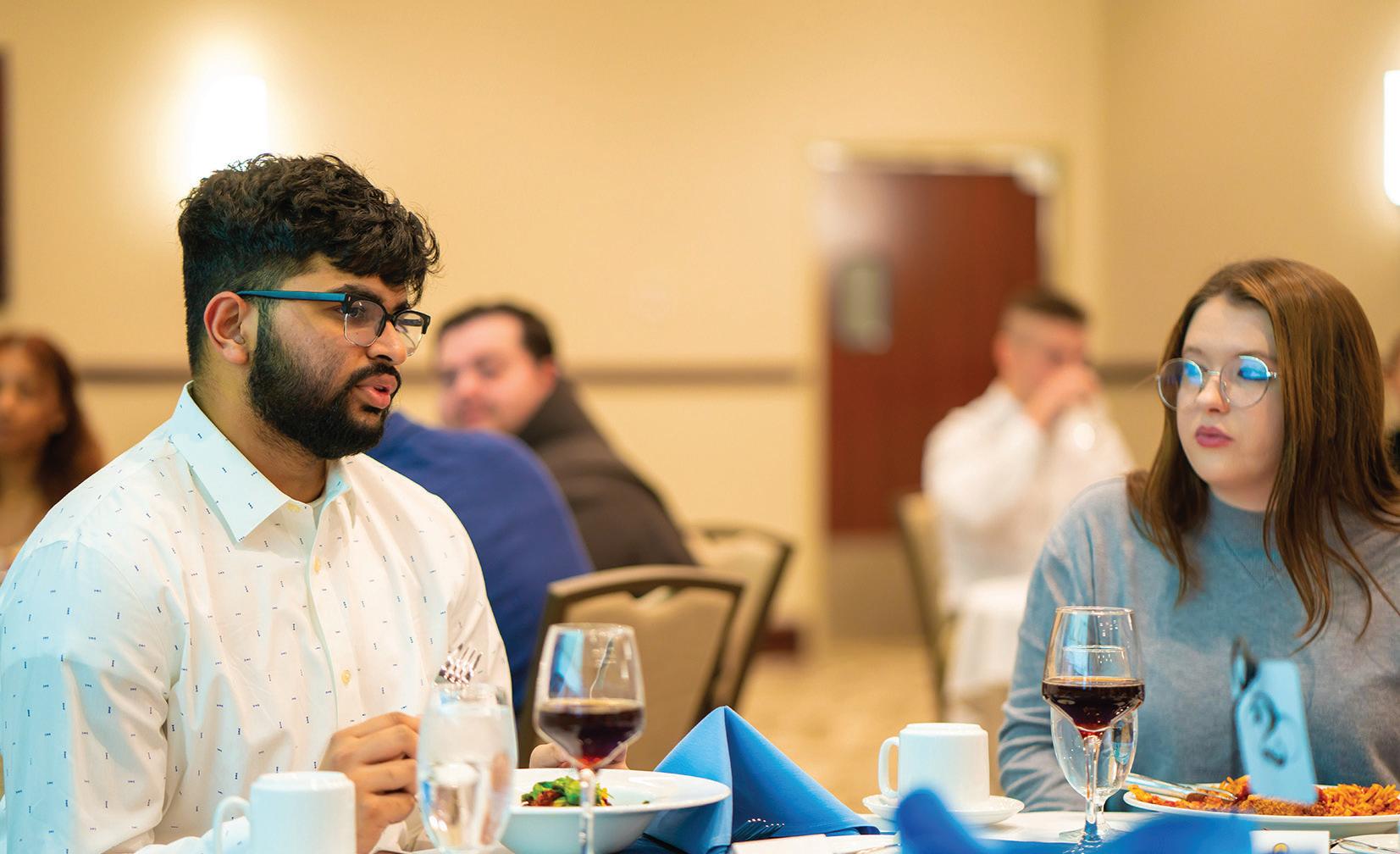
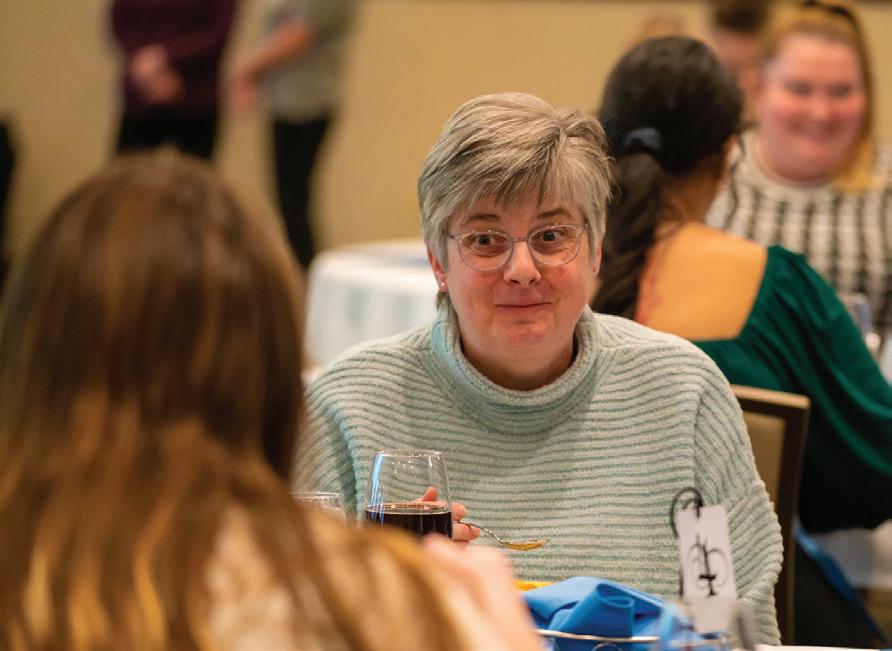
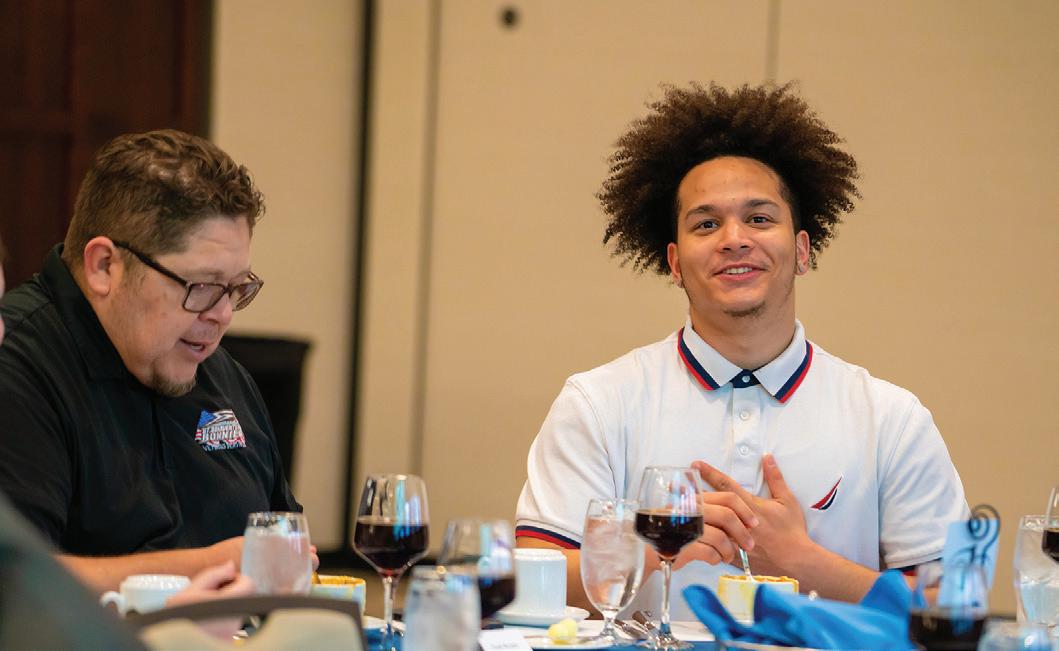
Bonnies4Bonnies
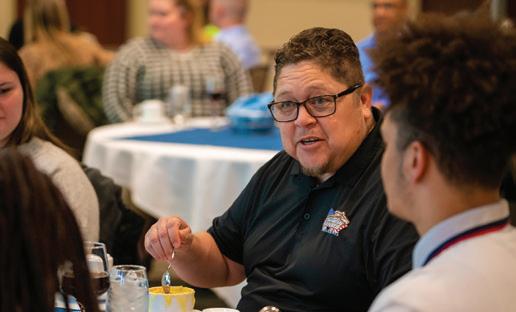
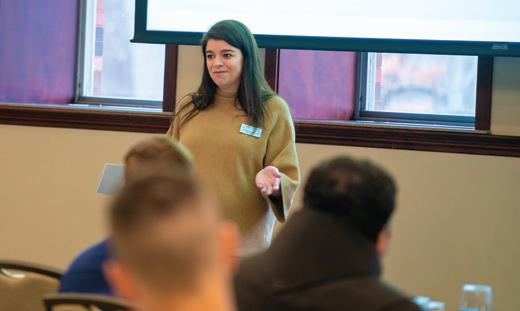
Bonnies4Bonnies is an annual career networking event that is held on campus in January or February. This event provides the opportunity for students to connect with SBU alumni. The alumni in attendance represent a broad spectrum of professional positions, from freelance writers to corporate executives. During the event, students have the opportunity to mingle and meet our alumni to make connections that just might lead to a job interview or a helping hand in the future.
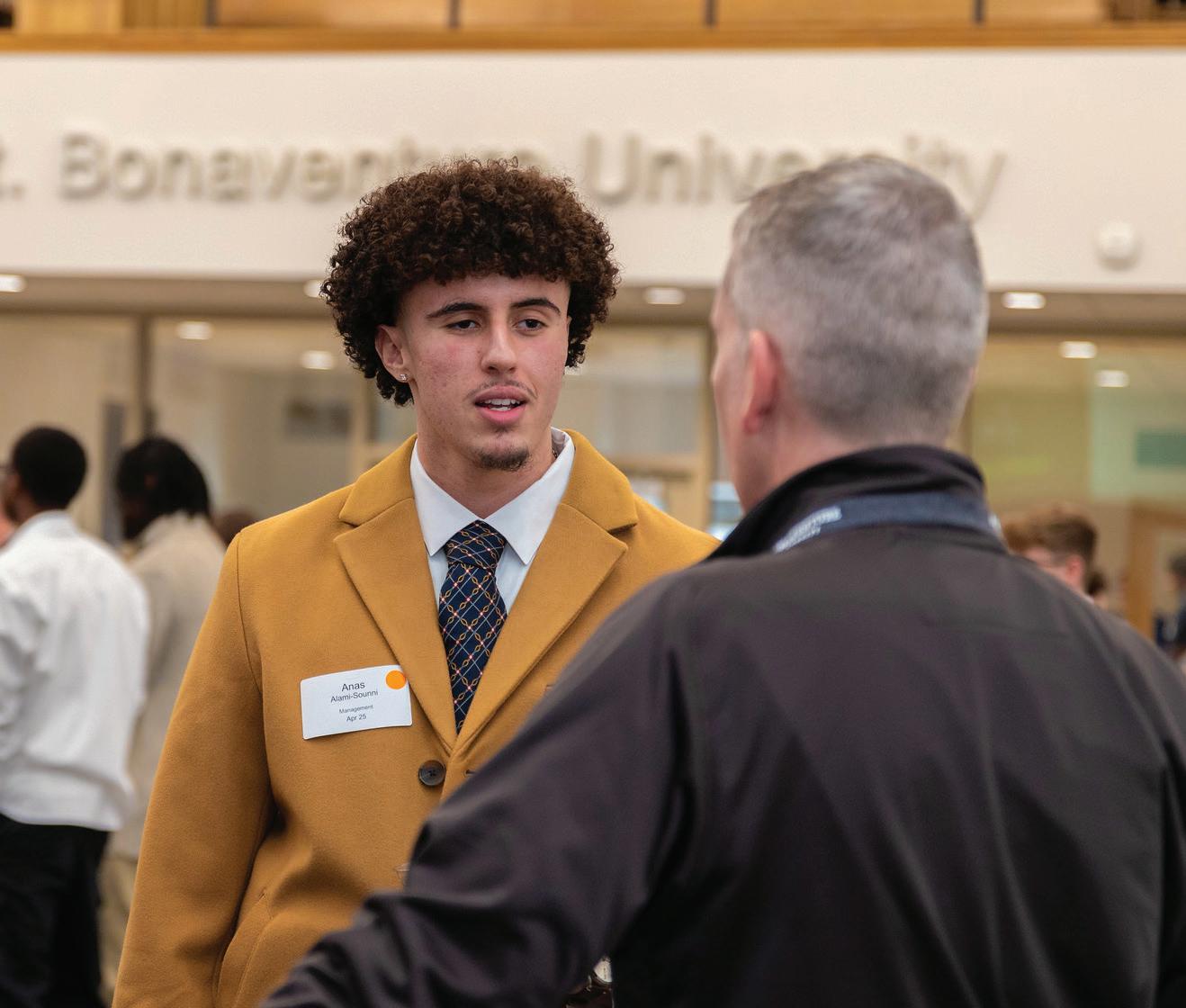
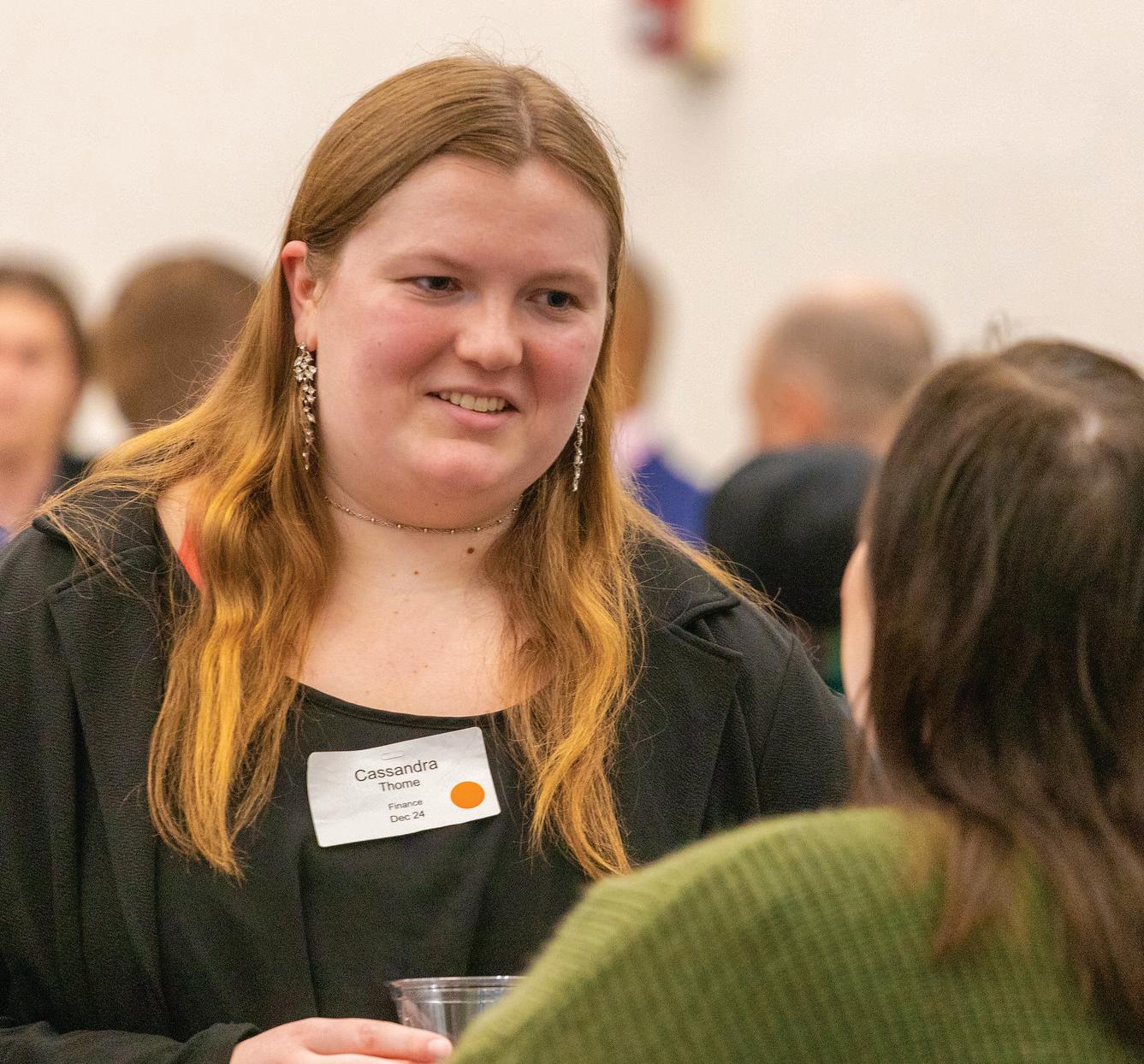
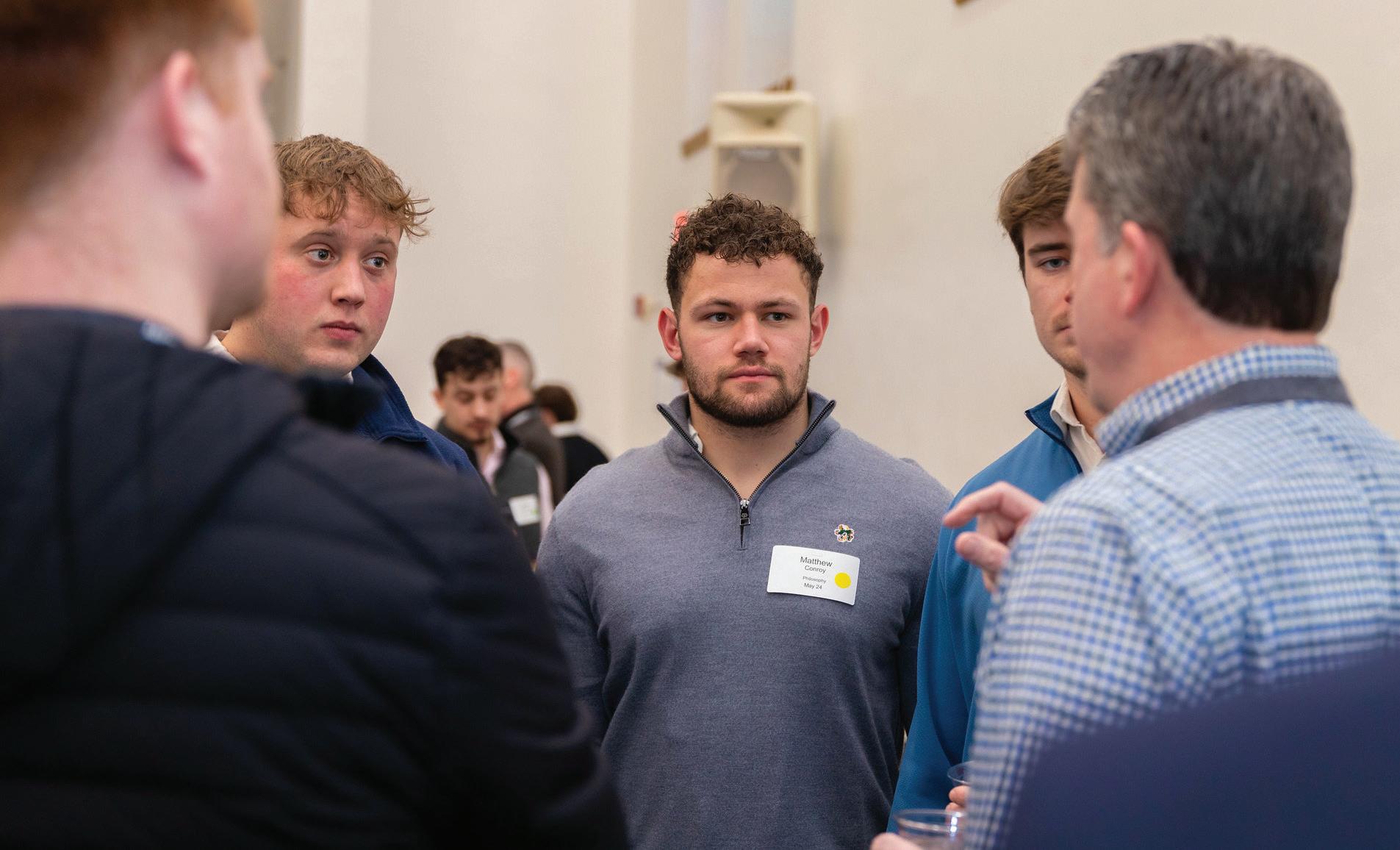

Bonnies4Bonnies
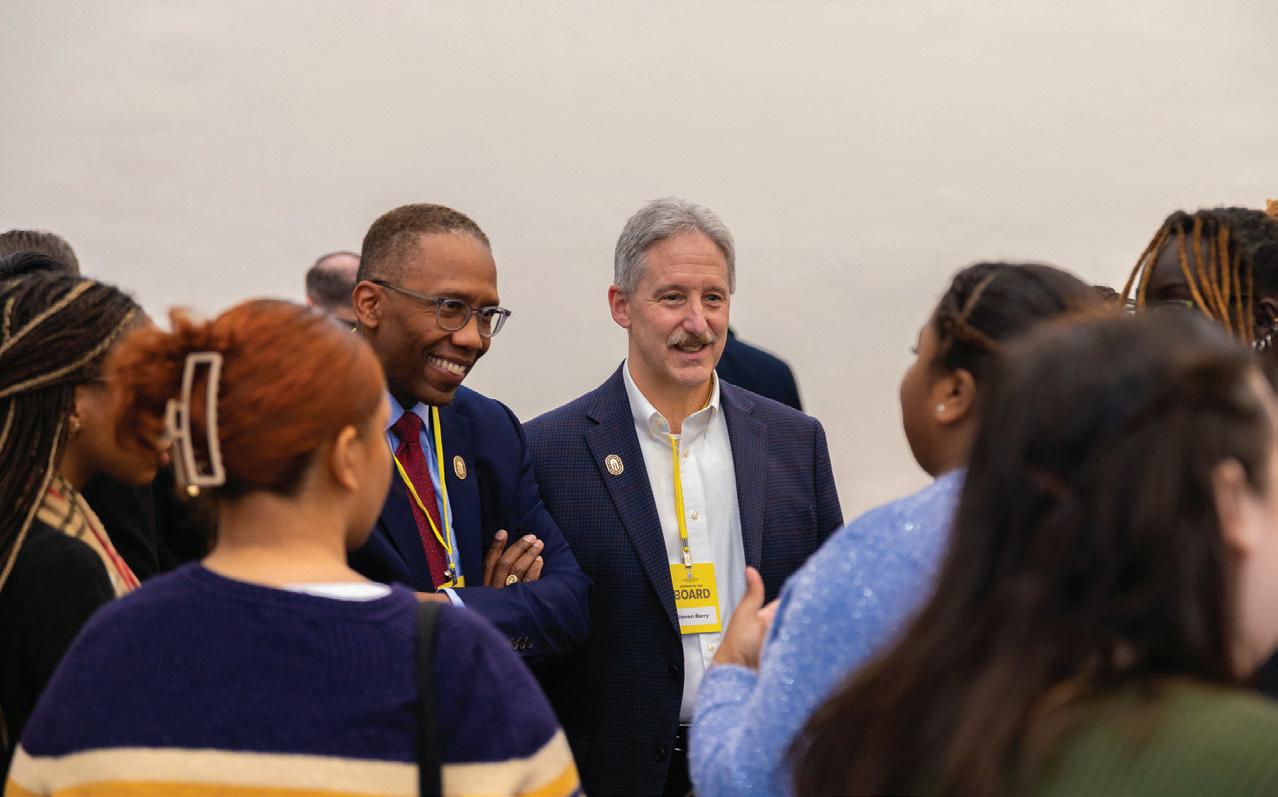
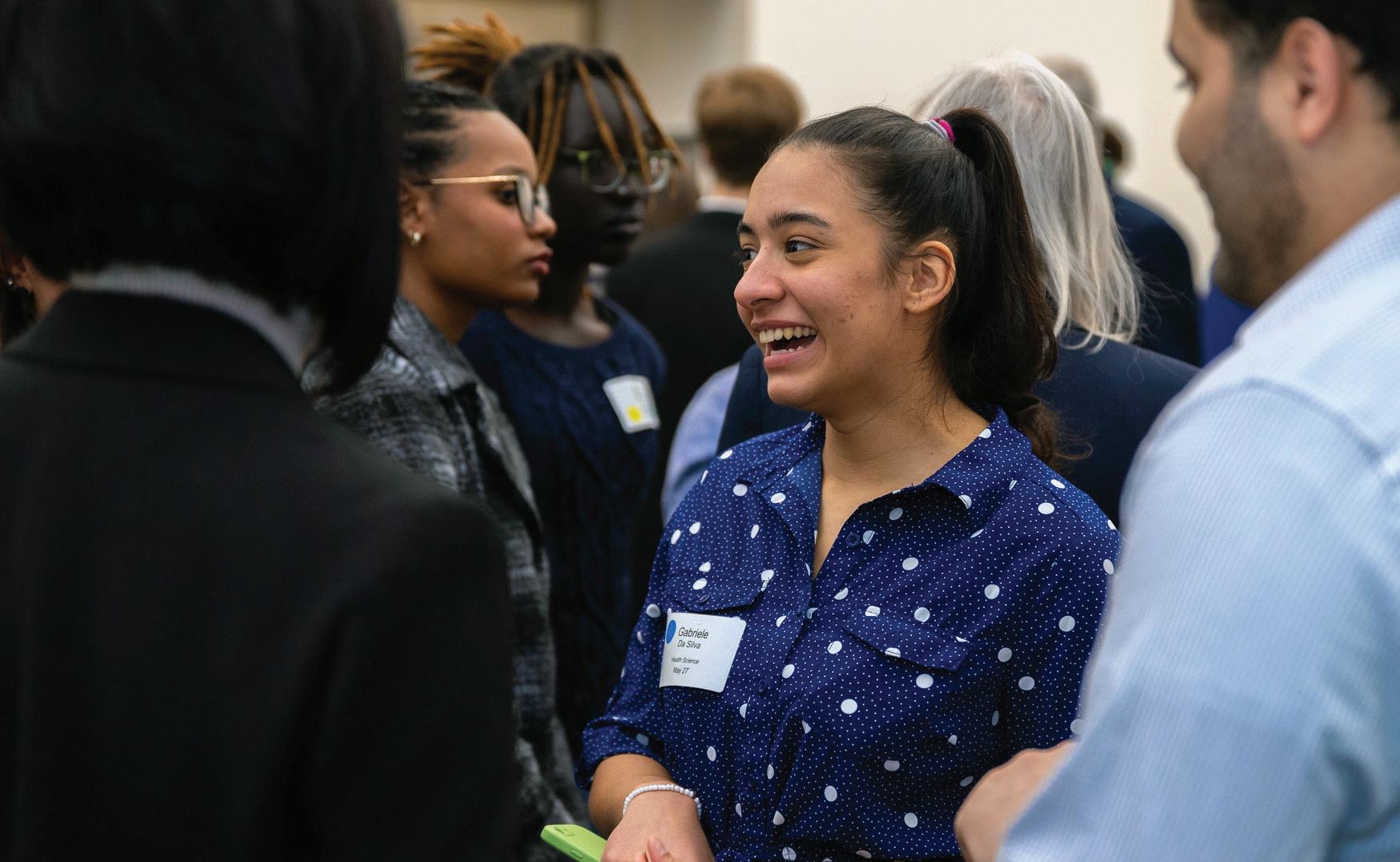
Best Practices Networking
Build networking into your everyday routine: Start by networking in your classes with someone familiar, such as your professors and classmates.
Faculty have a lot of connections, so make a good impression by sitting near the front of the class, asking questions and following up with professors after class. Once you establish this connection with your professor(s) it will be much easier to ask for help searching for an internship or job.
After you and your classmates graduate, life can take you in many different directions. It is beneficial to keep in touch and build relationships with your classmates as you never know what the future will bring. For example, five years from now you may be looking for a new job and your classmate has an opening at their company. Chances are if you’re connected to that classmate you might have a foot in the door for the job opportunity.
Get involved on campus: Joining an organization on campus is a great way to make friends and build your network. Members of the organization typically share similar interests and organizations frequently have guest speakers, faculty advisers and mentors who will give you the opportunity to expand your network.
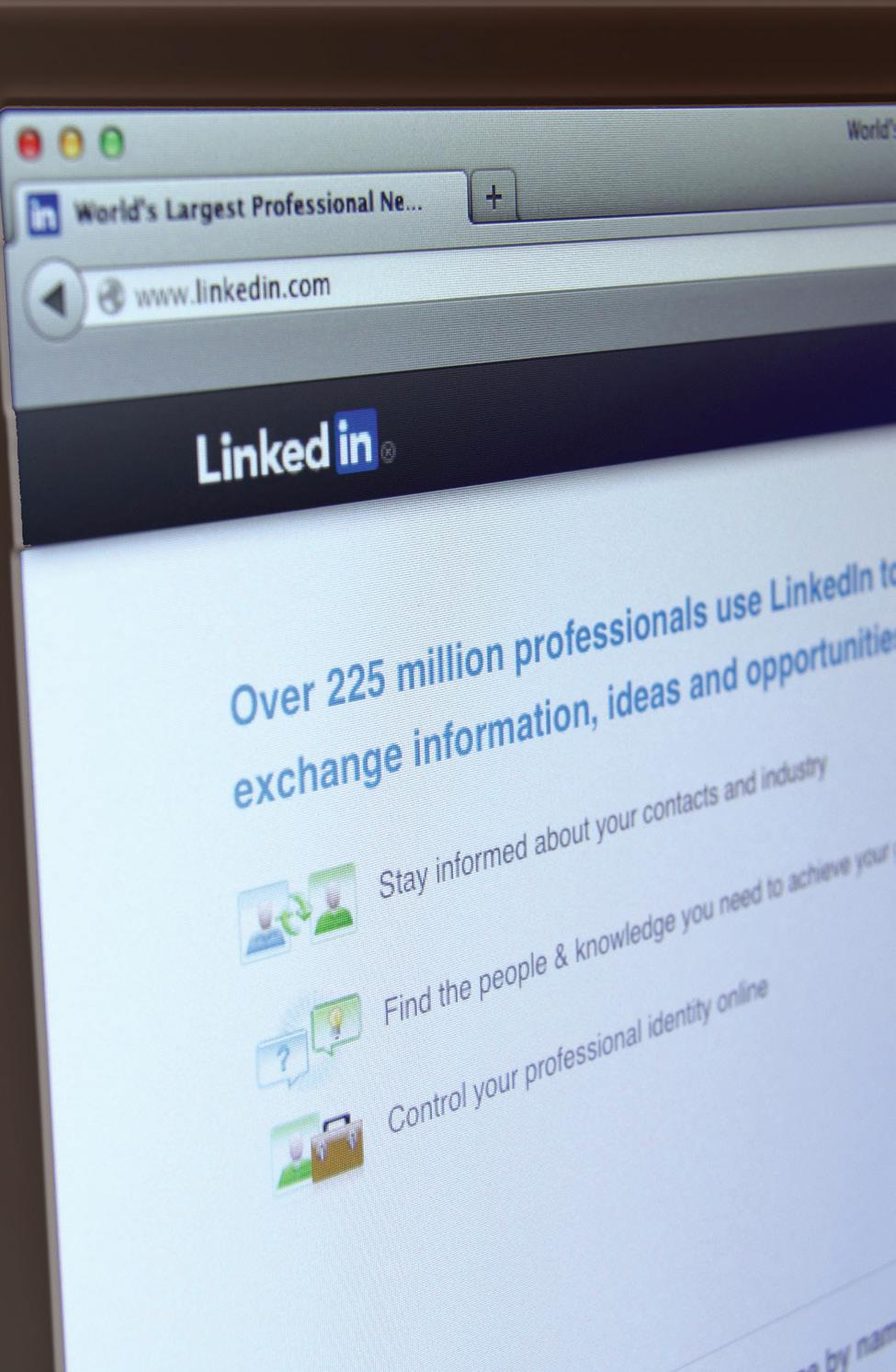
Use social networking sites: Nearly everyone has some sort of social media account. Believe it or not, people spend almost a quarter of their time surfing the internet. If you haven’t done so already, create your LinkedIn profile to start establishing your professional network. Start by connecting with your classmates, professors and alumni. When you send a connection request to someone you’ve never met, be sure to send a short message with your request. Employers frequently post internship and job opportunities to LinkedIn, which is another search engine you can use when looking for that internship or dream job.
Visit the CPRC: The CPRC staff is constantly in contact with employers and alumni and can help you build your professional network. The CPRC also hosts networking events, employer information sessions and other events throughout the year to help students expand their network. The staff can also help you build your resume so you’re prepared to apply for that dream internship or job.
Best Practices Networking
Create an elevator pitch: An elevator pitch is a 25- to 30-second statement — a personal commercial, really — explaining who you are and what you are looking for. Your elevator pitch can be used at any time and is commonly used during networking events when you’re speaking with prospective employers. It typically starts with a statement about yourself and includes information about past internships or other related experiences. It is also important to include your goals and what you plan to achieve. Make sure you are comfortable saying it aloud so you can breeze through it when you are speaking with someone and it sounds natural.
Make the first move: Making the first move can be scary and awkward but after you make the first move everything will be a lot easier moving forward. Don’t just think about it, do it. If you hesitate you might miss out on a great opportunity.
Maintain your networks: Now that you’ve established a network, you need to maintain your network. For example, if you met an employer at a networking event, send your contact a followup email after the event. Let the employer know that you enjoyed speaking with them about their company (or job opportunity). This will open the door for an additional conversation. Even if the employer doesn’t have the perfect job open right now, let them know that you appreciated their time and look forward to keeping in touch.
Get Your Networking Cards!
Perfect for building relationships, gaining work opportunities, and job referrals. Schedule an appointment with the CPRC on Handshake to get your own!
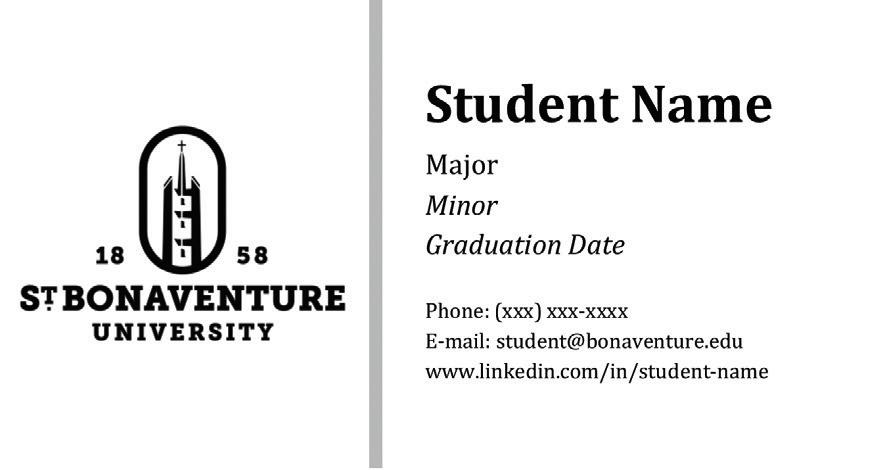
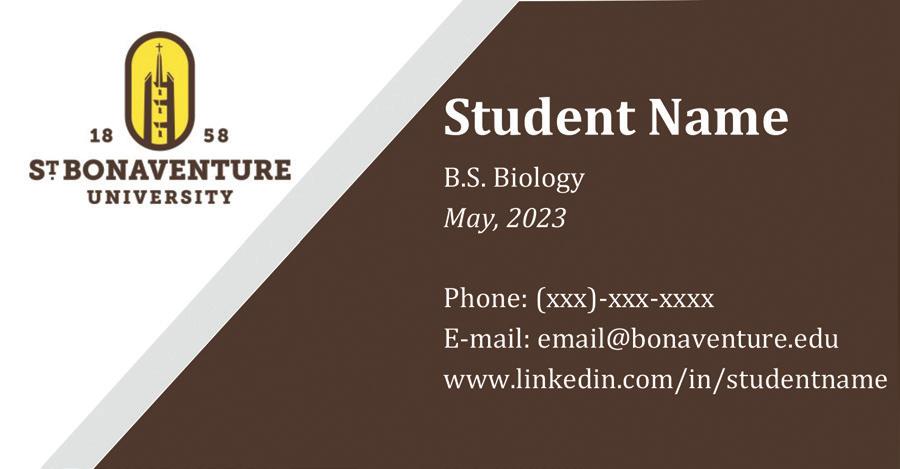
Student Success Stories
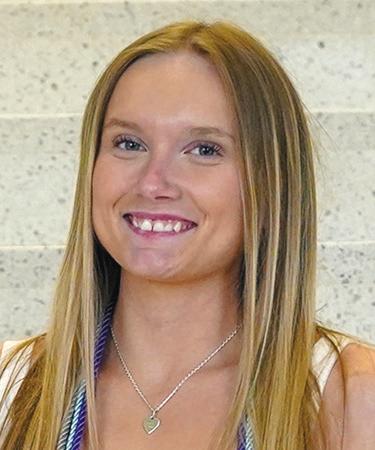
Kylie Cocca
As a Business Management graduate from St. Bonaventure, the Career and Professional Readiness Center (CPRC) was an essential resource throughout my academic journey. It began with guidance during my internship search and continued into my junior year with resume improvement and career planning aligned with my goals. In my senior year, the CPRC helped me explore career paths and supported my job search—leading me to a position I’m truly excited about. Their resources and dedication were invaluable to my success and are a vital part of the university experience.
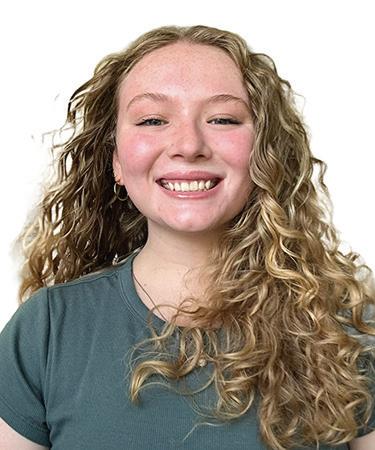
Ryann Donlon
The CPRC supported me throughout my time at St. Bonaventure. When it was time to apply to law school, I knew exactly where to turn. The team helped me polish my resume, prepare for interviews, and fine-tune my personal statement—taking much of the stress out of the process. I also used the CPRC’s Digital Engagement Room for virtual interviews, including my most important one: Cornell Law. I’m thrilled to share that I’ll be attending Cornell Law School this fall—and I couldn’t have done it without the CPRC.
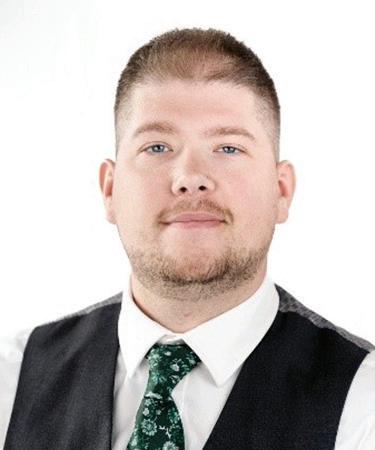
Chris Hammett
During my final semester at SBU, I had the pleasure of working with the CPRC. Until then, I hadn’t taken the time to professionally develop my LinkedIn profile or resume, but they helped me make meaningful progress. Molly Moretti took the time to guide me in preparing for the professional world, and her support made all the difference. Thanks to the CPRC, the St. Bonaventure community, and some hard work, I’m now the Chief Financial Officer at Olean Manor Inc. Field of Dreams — and I couldn’t be happier.
Student Success Stories
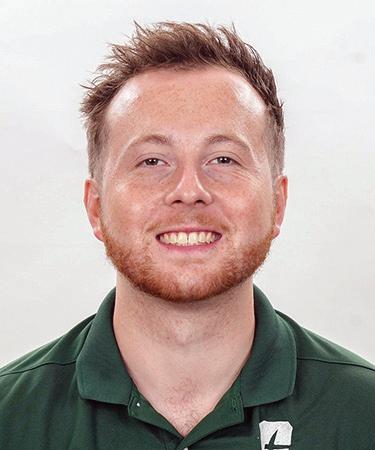
Brian Ramarge
Many people at St. Bonaventure shaped who I am today, but the CPRC played a vital role in clarifying my career path. From resume tailoring to job search strategies, their support had a powerful impact. After graduation, I felt directionless and overwhelmed, but the CPRC helped rebuild my confidence and reminded me that one job doesn’t define a career. With their encouragement, I found a dream internship in North Carolina—proof that the right support can lead to great things.
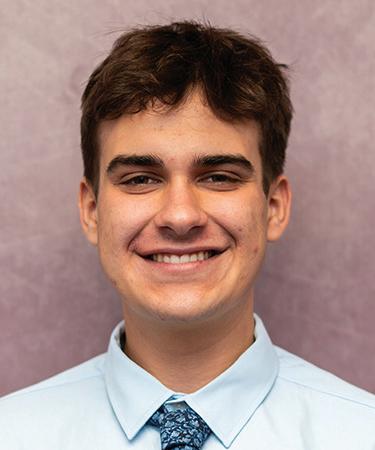
James Torres
The CPRC was instrumental in helping me build my resume and navigate my internship search. Every interaction I had with their staff was positive, and I strongly encourage all students to connect with them. The CPRC website is also a valuable resource—it includes links to platforms like the Hispanic Alliance for Career Enhancement and iHispano, offering career opportunities for Hispanic students. I was honored to be featured in the CPRC’s Bonnies in the Spotlight program for my internship with the New York Boulders. I’m grateful for the encouragement and guidance I received.
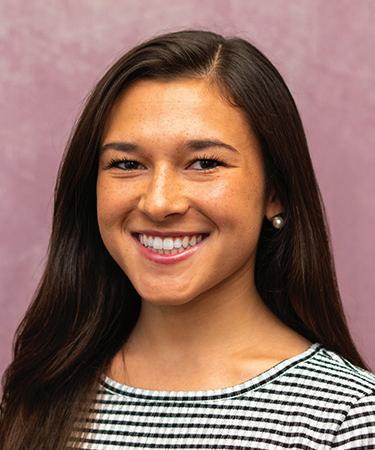
Mackenzie Schlee
The CPRC has supported me throughout my four years at St. Bonaventure. I was first introduced to them through the Freshman Leadership Program, and I immediately saw how approachable and helpful the staff were. When I began applying for internships in my sophomore year, they guided me through every step—from application tracking to interview prep to crafting a strong resume and cover letter. Thanks to their support, I landed an amazing internship at Optimax and was later offered a part-time role. I now feel confident navigating job interviews and managing my professional documents.


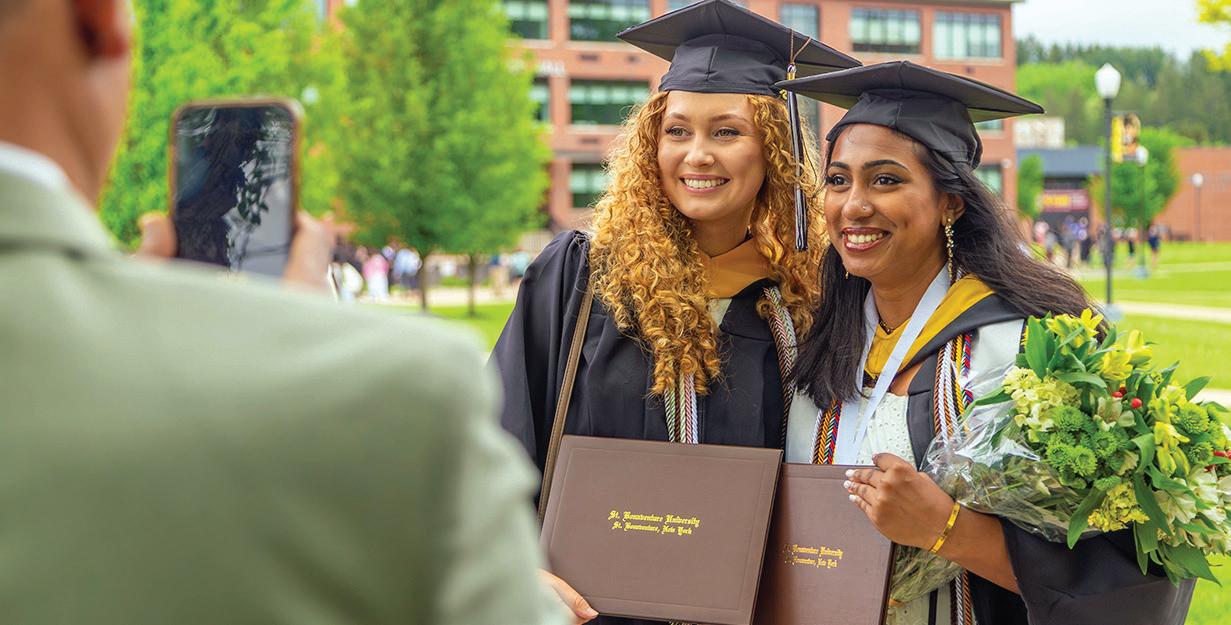
College students who visit their college career center are 67% more likely to land a full-time job compared to their peers who do not use career center services.
